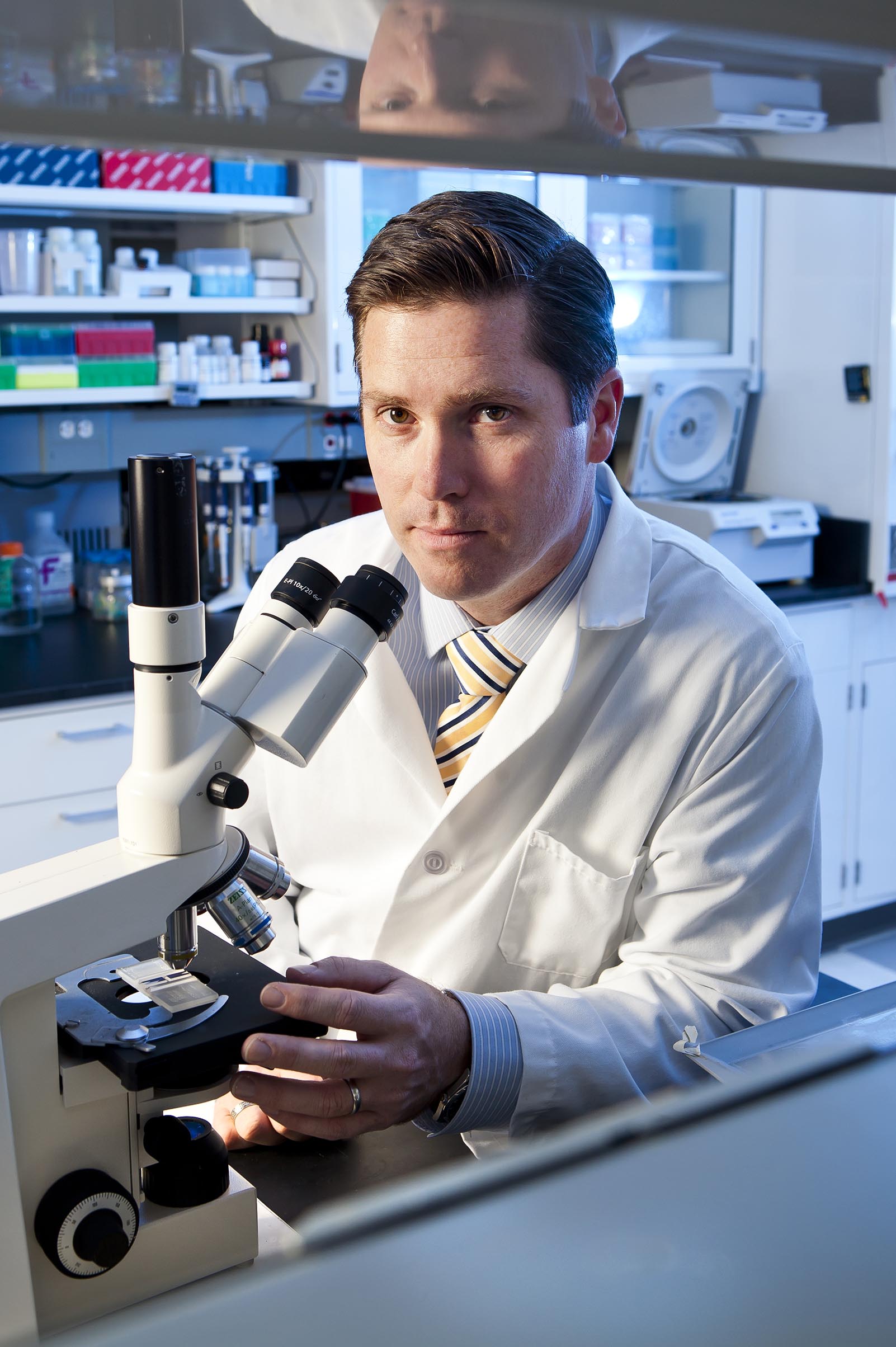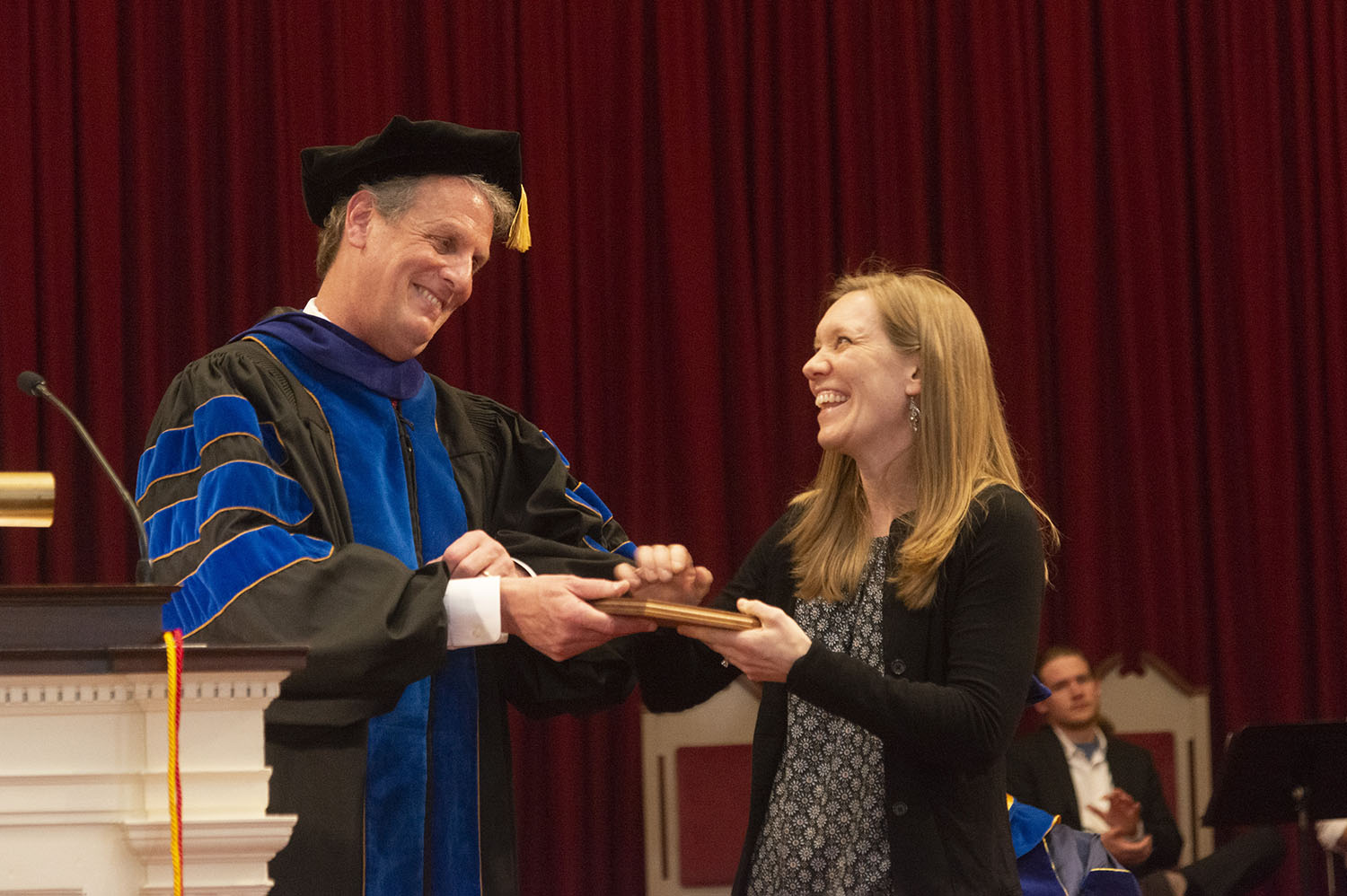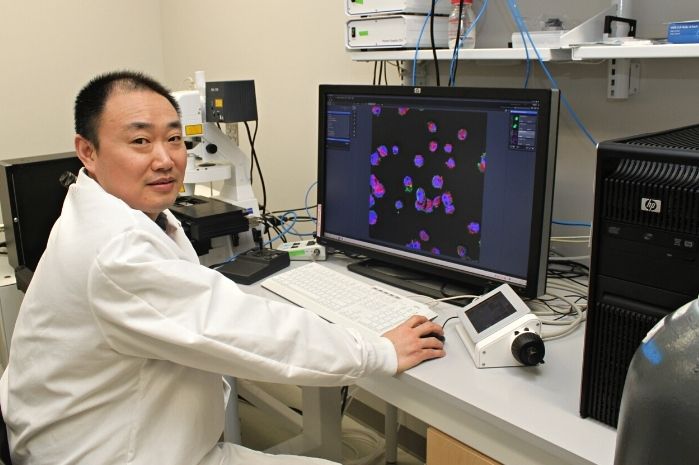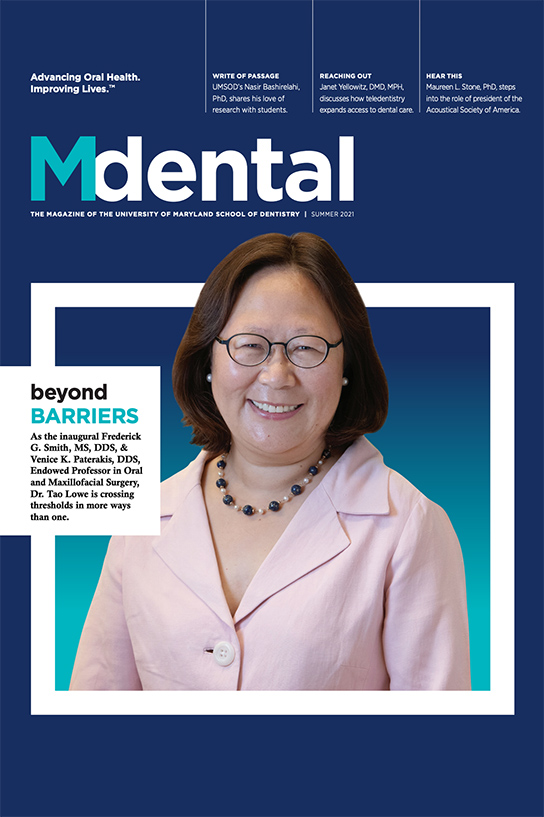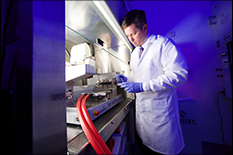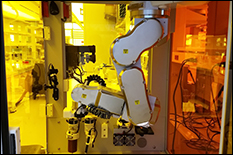News Story
Study Links Placental Stiffness and Preeclampsia
Compared with healthy pregnancies, the placentas of preeclamptic pregnancies are stiffer, according to a new study put forth by a team of University of Maryland (UMD) and Washington, D.C.-area researchers.
The findings, published in the Archives of Gynecology and Obstetrics, offer hope of a new biomarker for placental insufficiency, a serious pregnancy complication that is also linked to preeclampsia in expectant mothers. Occurring as early as 20 weeks into pregnancy, preeclampsia can prevent the placenta from getting enough blood, causing the baby to get an insufficient supply of food and oxygen. One of the leading causes of premature births in the United States, preeclampsia is typically diagnosed based on the onset of potential indicators in the expectant mother, such as hypertension and high amounts of protein in the urine.
“Early identification of patients at increased risk of preeclampsia is vital for increased surveillance, prompt treatment and prevention of complications,” said Michail Spiliopoulos, M.D., a maternal-fetal medicine specialist with MedStar Washington Hospital Center and first author of the paper. “A combination of risk factors from the patient’s history and physical exam and several biomarkers are in use currently but our predictive ability is not optimal. The results of this study show that placental stiffness could prove to be an additional biomarker to be used in combination with existing ones to improve our predictive ability and early diagnosis of preeclampsia.”
The research team applied what is known as ultrasound-based shear-wave elastography (SWE), a noninvasive technique typically used to image liver lesions, benign and malignant breast masses, and other abnormalities in the body. Together, the team found that placental stiffness is significantly increased in pregnancies with preeclampsia, but it is not affected by gestational age or maternal age. Even more, the group’s study showed that increased placental stiffness is likely to correlate with lower birth weight and earlier delivery.
“High blood pressure during pregnancy – as seen in preeclampsia – is one of the most common causes of death during pregnancy,” said contributing author John P. Fisher, chair of UMD’s Fischell Department of Bioengineering (BIOE) and director of the National Institutes of Health-funded Center for Engineering Complex Tissues (CECT). “Throughout history, and still today, the primary treatment strategy for preeclampsia is delivery of the baby and placenta. The more we understand what factors contribute to placental health, the closer we are to developing a better treatment strategy for this devastating disorder.”
In addition to preeclampsia, the expectant mother’s body mass index proved to be the only other tested variable that correlated with placental stiffness, according to the study.
The research team evaluated 47 single pregnancies in the second and third trimesters, of which 24 were healthy and 23 were diagnosed with preeclampsia. Pregnancies with certain factors – such as multiple gestation, gestational hypertension, and autoimmune disease – were excluded from the study.
Moving forward, the researchers hope to further investigate if increased placental stiffness is only seen in preeclampsia, or if it might also be present in other causes of placental insufficiency such as diabetes, chronic hypertension, or intrauterine growth restriction. As such, further research is needed to evaluate the utility of placental SWE as a biomarker for preeclampsia.
“Even though this study successfully demonstrated the important correlation between the biophysical properties of placenta and preeclampsia, there’s still a lot that we do not understand,” said Che-Ying (Vincent) Kuo, a BIOE alum (Ph.D. ‘17) and contributing author. “Next, we’d like to conduct a longitudinal study that tracks the placental stiffness starting from the first trimester to term for both normal and preeclamptic pregnancies. The results from such a study could be extremely valuable to assess placental stiffness as a predictor or early diagnostic tool for preeclampsia from the first trimester, which is ultimately what we need to save lives.”
Michail Spiliopoulos, M.D., (Department of Obstetrics and Gynecology, MedStar Washington Hospital Center) served as first author of the paper titled “Characterizing placental stiffness using ultrasound shear-wave elastography in healthy and preeclamptic pregnancies.” Che-Ying (Vincent) Kuo (University of Maryland’s [UMD] Fischell Department of Bioengineering [BIOE]; Sheikh Zayed Institute for Pediatric Surgical Innovation, Children’s National Health System; National Institute of Biomedical Imaging and Bioengineering/National Institutes of Health [NIBIB/NIH] Center for Engineering Complex Tissues [CECT]) and Avinash Eranki (Sheikh Zayed Institute) also contributed equally to the paper.
Marni Jacobs (Clinical and Translational Science Institute, Children’s National), Christopher T. Rossi (Department of Pathology, Children’s National Health System), Sara N. Iqbal (Department of Obstetrics and Gynecology, Division of Maternal Fetal Medicine, MedStar Washington Hospital Center), John P. Fisher (BIOE, CECT), Melissa H. Fries (Department of Obstetrics and Gynecology, MedStar Washington Hospital Center), and Peter C. W. Kim (School of Medicine and Health Sciences, The George Washington University) also contributed to the paper.
This work is supported in part by funding from the Sheikh Zayed Institute for Pediatric Surgical Innovation of Children’s National Health System, and the NIBIB/NIH Center for Engineering Complex Tissues.
Published October 26, 2020

